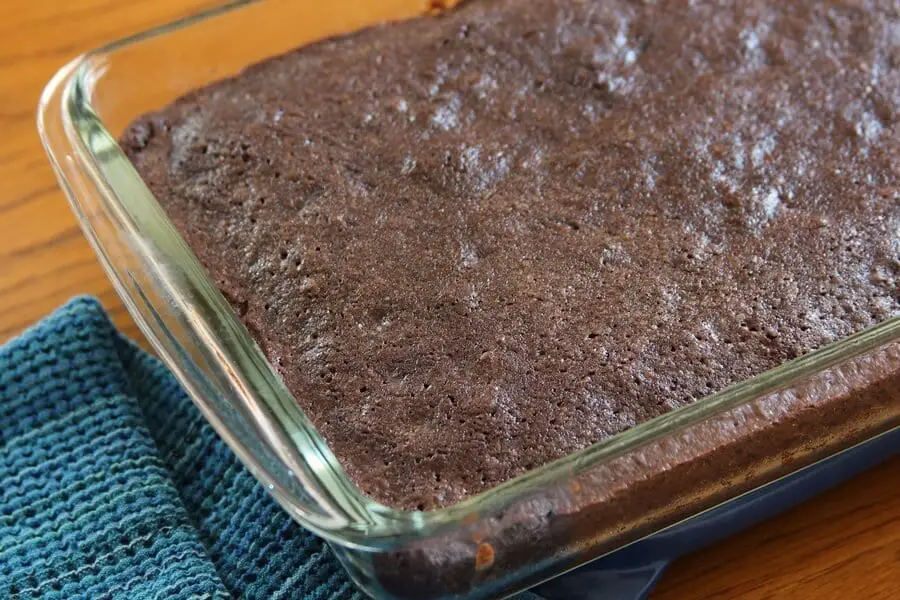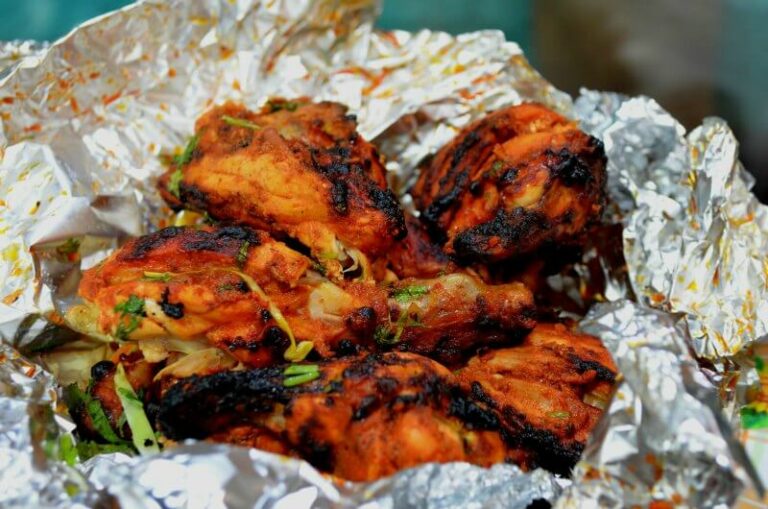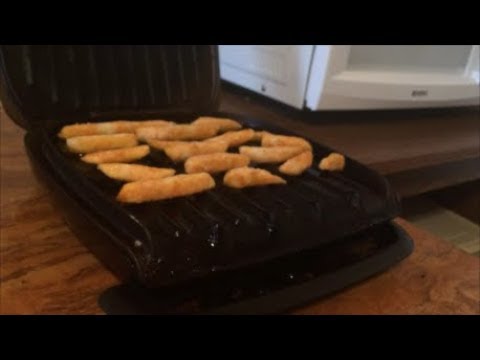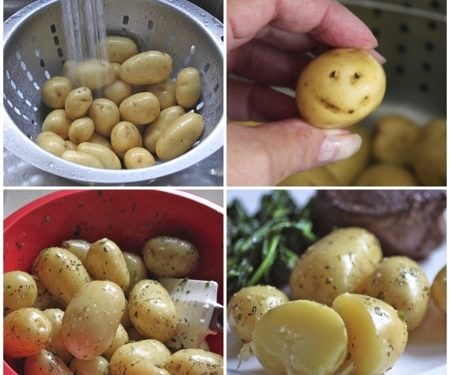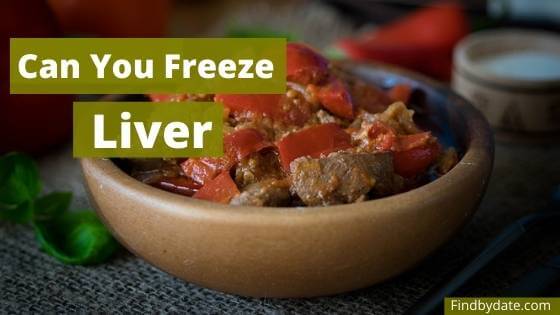How Long Should I Bake Brownies in a Glass Pan?
Brownies are one of the most popular desserts around the world. They come in different flavors and textures, but they all share one thing in common: their rich chocolatey taste. Brownies have become a staple dessert for many occasions, from potlucks to family gatherings.
Baking brownies in a glass pan is an option preferred by many bakers as it offers certain advantages over other materials. A glass pan heats up evenly and hold its temperature longer than most alternatives. However, baking requires precision and even minor changes can affect the outcome of your brownie. This article will take you through everything you need to know on how long it takes to bake brownies perfectly in a glass pan.
Understanding Baking Science & Glass Pan
Before learning about baking times for brownies, it’s important to understand how heat transfer mechanisms work when baking and how this relates to using a glass pan. There are three major types of heat transfer mechanisms involved in baking: conduction, convection, and radiation.
Heat Transfer Mechanisms in Baking
Conduction occurs within a material or between two surfaces that have different temperatures. When heat is applied on one surface or end of an object, it travels through the object’s interior to the opposite end, uniformly heating it up.
Convection, on the other hand, occurs when hot air currents move throughout space leaving hot spots near sources such as oven walls and cool spots on edges far away from them.
Lastly, radiation means that heat energy is released directly into items close by without having any physical contact with them.
When baked goods are placed on a glass pan inside an oven, conduction happens first; heat passes from the metal coil at the bottom of your oven into your glass pan through thermal conductivity properties of each layer (air being mostly transparent). As time goes by and heat builds up in the glass pan, the other two forms of heat transfer start to take place. Convection air currents circulate with airflow patterns determined by oven geometry and your recipe mixture. And as for radiation heat coming from a heating coil above the oven can be directly absorbed by glass because it is transparent and does not insulate. Knowing which type of heat transfer mechanism is used during each stage of baking is crucial when trying to determine how long you should bake brownies in a glass pan.
Glass Pan Characteristics
Glass pans vary in thickness, color, and other features that affect their baking outcomes. A thicker glass takes longer to conduct heat from the bottom creating a lower ceiling temperature (inside an oven). This means that more time will need to be spent during baking so that adequate amounts of convection and radiation occur; as well as filling the thermal structure within a thicker piece of material. The downside to this is that since deep dish cakes get more direct heating on their surface, they may end up burnt on top before browning fully throughout.
In preparing for baking, a key thing to remember about glass pans is that they do not store heat well unless you preheat them properly before using them. One tip for ensuring even baking would be leaving your batter outside while you are warming up your dish since cold dough experiences more rapid burning at its contact points.
Factors Affecting Brownie Baking Time in Glass Pans
The duration for which brownies have been mixed plays a role in determining how long they ought to bake in a glass dish versus what they require from other materials such as steel or silicone bakeware.
Ceiling Temperature, Conductivity, and Recipe
The formulaic approach involved with making brownies also influences cooking times greatly if proper mix ratios aren’t followed alongside correct temperatures:
Time-honored Recipes Vs. Modern Brownie Mixes
Time-honored classic recipes contain eggs and chocolate as both these substances impede thermal conductivity and make any recipe slow dreading increased baking times. As a result, brownies made with traditional recipes like Grandma’s would require more extended periods to cook than the modern recipes that are typically used.
Modern premade brownie mixes incorporate fewer egg products alongside additional sugar so their required cooking times are comparatively shorter to ensure optimal temperatures reached without burning. This is due to decreasing thermal insulating properties when compared against earlier methods of mixing.
Fudgy or Cakey Mixing? The Impact on Baking Time
The most distinguishing feature of any type of baked product is the tenderness inside, commonly referred to as “fudginess” or “cakiness”. The fudgier iteration needs a lower temperature and short cooking duration for good results mainly because they contain more simple sugars that caramelise at reduced temperatures. They can also be left denser, which should prevent burning even if your oven heats up rapidly.
A cake-like brownie, however, requires higher levels of heat and extended cooking periods for them to set faster, whilst remaining moist enough not to eat dryly.
Oven Temperature Variation and Precision Instruments
Each oven has its quirks such as uneven heating and idiosyncrasies; which means you should calibrate it according to manufacturer instructions so it can emit uniform heat around your pan while setting an accurate temperature control range. Using thermometer readings taken in different parts of the oven can help determine changes in temperature during both preheating and baking processes, although this ultimately slows down progress slightly itself. Convection ovens usually have shorter bake times since air currents present may lead to higher heat transfer rates than those controlled by conductive methods alone.
Calibrating Your Oven for Best Results with a Glass Pan
Your oven must meet certain preheating strategies before placing your glass dish inside. These strategies include:
Proper Preheating Strategies
- Preheat the oven 15 minutes before you place the dish, so it can reach your desired temperature.
- Cover a piece of aluminum foil over your burner grates preventing them from being burnt; else your heat retains consistent.
- Thermometers should be calibrated in line with manufacture instructions if they rely on batteries to function correctly, plus there’s no harm in doubling up on heating surfaces by choosing baking stones as well for extra insulation and thermal retention during cooking cycles!
Blending humidity and temperature to attain uniform oven environments
Humidity levels contribute to how evenly your brownies bake. Higher humidity levels lead to increased moisture retention of baked goods which takes away much flavour when done excessively or decreases fluffy textures (important when creating cake-like versions). To ensure the former does not affect your brownies, place an oven thermometer inside when baking begins as different humustypes affect air temperatures differently leading to uneven baking times between different parts of your dish.
Ideal Baking Time for Classic Fudgy Brownies in a Glass Pan
Fudgey brownies are popular because they’re rich, dense and full of chocolate flavor. They contain more sugar than flour and are made with melted chocolate rather than cocoa powder. Here are some tips for achieving moist and chewy fudgy brownies with shorter periods spent in the oven:
- Preheat the oven to 325 degrees Fahrenheit (160°C) about 15 minutes before baking begins.
- Bake brownies for around 15 – 20 minutes depending on thickness until toothpick inserted comes out clean
- Take pan out, remove from heat finish cooling at room temp since is desirable that they retain their shape while cooking
- Check brownie consistency every five minutes by visually inspecting them asking yourself “are my edges crispy but not dry? If so then it’s time.”
Ideal Baking Time for Cake-Like Brownies in a Glass Pan
If cake-like brownies are your go-to-dessert, add an extra egg and slightly more flour than to the fudgier-like browner version ensuring you stick to the following guidelines:
Guidelines for measuring the ingredients: Flour, Butter, Eggs & Sugars
- Preheat oven to 350°F (175°C) so it reaches optimal temperature.
- Measure all ingredients in a bowl!
- Cream butter, sugar and eggs using an electric mixer until lightened and fluffy.
- In another container; mix flour with baking powder and stir till fully incorporated.
- Add dry items gradually into the wet mixture while blending in between making sure every ingredient is mixed evenly before moving onto next round of additions.
Ideal baking time vs. cooking with low heat: Which yields better results?
Baking times for cake-like brownies vary depending on which recipe that guides you. For most recipes though, these variations take way longer to cook ~ around 25-30 minutes may be required at least before finishing cooling process outside the oven or inside using fans/regular household air circulators. If however too high temps are used when beginning warmth up within first portions of mixing then brownies will sadly “boil over” instead of embracing moist cake-like texture.
Testing Brownie Doneness: Three Common Techniques You Can Try or Adopt
How do you know when your brownies are ready? Here are three common tests you can try out:
Visual Check Using Toothpicks
Insert a toothpick into three different sections around the batter’s center-wise till they come out clean with little crumbs attached on them. The densest parts usually require some time under sunlight such as lower outer crusts or middles of batches since they tend to need a bit longer just as higher parts like tops may occasionally need less.
Press Test Using Your Hand/Finger technique
Finger tip testing helps decide whether their finish exhibits a gooeyness nearing fudginess or is closer to a cake-like consistency. The centre most part of your brownies should be slightly firm and spring back when touched from above with a light pressed finger-tip test.
Spongy-brownie-touch answer/Thermometer check
Thermometers and/or the “sponge-brownie-touch” answers do well when dealing with speciality versions per recipe like gluten free, eggless or etceteras where deviations will slightly lead to different baking times between versions.
Removing Your Brownie From the Oven Without Burning It:
After you’ve determined that your brownies are ready, it’s important not to allow them to overcook even after switching off your oven and returning them inside the pan for oven resting at room temperature.
Cooling strategies that help prevent overcooking
Cooling period is crucial for presenting bakery treats without any adverse consequences such as overcooking. Once out of the oven, transfer them from pan to wire rack immediately by flipping them onto one surface only taking care not get burnt fingers thrown into the mix! This lets air circulate around every inch of the batter giving steam some time to evaporate which reduces overall water content until soon enough its done completely.
Firehose your brownies after removing them from heat if possible so they are quickly cooled down prohibiting further damage despite remaining edible for long periods.
Tips for Your Brownie’s Bottoms: Greasing and Lining the Pan
To ensure your brownie bottom is coated uniformly while baking you could try using cooking spray*, although butter works well also. Additionally, baking parchment papers make removal easier as an added benefit so lining up adequately on parts likely to create more contact points between dish and bar may reduce burning effects altogether!
Conclusion
We hope this article has helped make working with glass pans easy by breaking down key concepts like optimal temperatures times, helpful baking tips and techniques used during baking. Through following the above-given pointers, both beginners and experienced bakers alike can create delicious brownie batches perfect enough to be eaten by themselves, with ice cream or topped off toppings! If you wish to deepen your knowledge further there are numerous recipe books available that can help especially if new to baking like “Baking from Scratch for Dummies” by Your Name Here or “The Ultimate Famous Brownie Collection”by Shaila Patel.
Q&A
- Q: Can I bake brownies in a glass pan and for how long? A: Yes, you can use a glass pan to bake brownies! To get perfectly baked brownies, preheat your oven at 350°F (175°C) and bake them for 25-30 minutes. Make sure to check the doneness using a toothpick (it should come out clean) or by gently pressing the top – it should be firm to touch.
- Q: Is there any difference in baking time when using a glass pan versus a metal one? A: Glass pans tend to take longer than metal ones to heat up, so baking time may vary slightly. But generally, the baking time for brownies doesn’t differ much between the two types of pans. So if you’re switching from a metal to a glass pan or vice versa, just make sure to keep an eye on your brownies as they bake.
- Q: What happens if I overbake my brownies in a glass pan? A: Overbaking your brownies can result in dry and crumbly texture, making them less enjoyable to eat. So make sure you don’t exceed the recommended baking duration unless you prefer crispy edges and firmer texture inside.
- Q: Should I adjust my baking temperature when using glass pans? A: Although some recipes suggest lowering your oven temperature by 25°F (15°C) when using glass pans, it’s not always necessary for baking brownies. You can stick to the usual temperature setting but adjust the baking time instead based on how your brownies are progressing in the middle of cooking.
